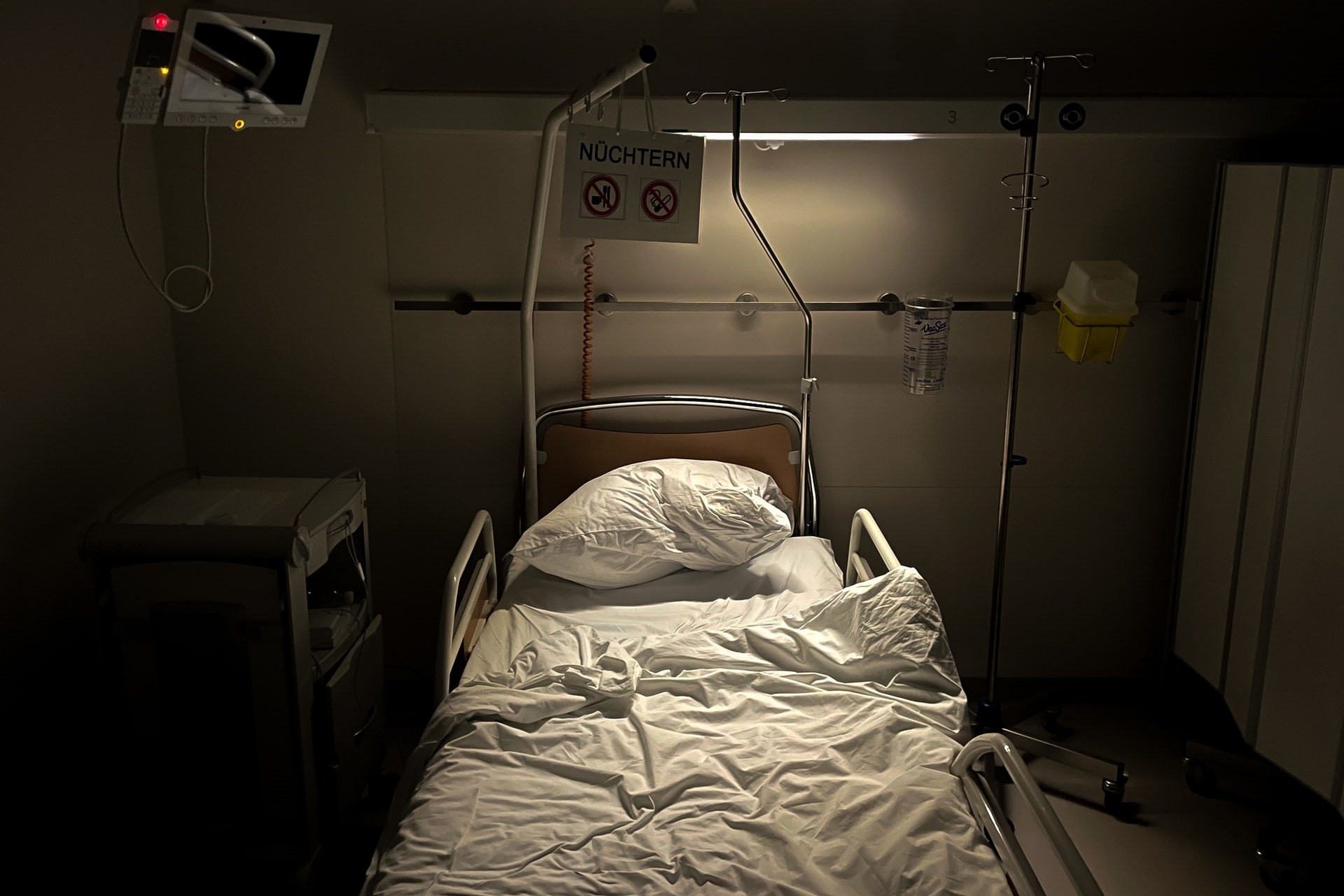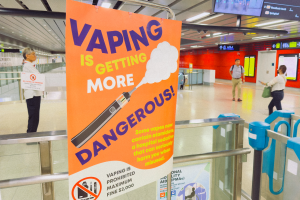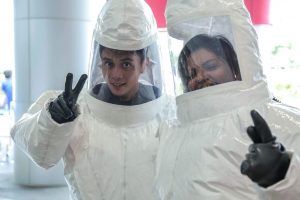*Names have been changed as nurses are unauthorised to speak to the press
When COVID-19 community cases began rising this year, Amir, an A&E nurse, remembers seeing an old, sallow-faced Malay woman crouching on a seat in his hospital’s Emergency Department.
Amir would eventually learn that one of her legs was amputated at the knee and that the treacherous virus infected her entire family.
ADVERTISEMENT
The woman sat there, terrified. “Will I be alright?” she whispered.
The nenek Amir saw was but one of many amidst a sweltering throng of COVID-infected patients waiting to be seen since cases began their sharp incline in late August.
Since then, Singapore has been engulfed by a massive wave of infected patients—its biggest yet. This has led to a bitter feeling of doom and uncertainty not only among the general public but also among healthcare workers such as nurses toiling daily, with nary an end in sight.
Staff shortage
Speaking to nurses from various departments and backgrounds, it became increasingly clear that one issue was more urgent and common than any other—shortage of staff.
It’s no secret that staff shortage is a problem many hospitals in Singapore have struggled with, some as early as 2016. This issue has since worsened following the sudden and massive uptick in patients over the past few months.
Angela, a COVID-19 ICU nurse, shares that resignations are becoming increasingly common among nurses. “We are all under a lot of stress, both physically and mentally,” she says.
Sufian, who works in the general ward of his hospital, shared that in many departments, working hours have increased exponentially from the regular 8-10 hour shifts to 12-13 hours or more. “Just imagine how tiring it is—especially for older nurses,” he says.
Sufian shared that previously, morning and afternoon shifts were separated. However, due to the burgeoning number of patients, many nurses are allocated both the morning and afternoon shifts, as they are now one and the same.
Although they should be allotted 2-hour breaks by law, the nurses are often too busy to rest in between.
Another nurse at the same hospital added: “Many of us do not even have 5 minutes to spare to eat our meals.”
The nurse-to-patient ratio in COVID-19 ICUs has increased as well. Angela reports that since the surge in COVID-19 patients, the nurse-to-patient ratio in her ward has increased from 1:1 to 1:2, while others shared that the ratio at their hospitals has risen from 1:1 to 1:3. This goes up to 1:4 if the nurses are overstretched.
Due to the highly unpredictable conditions of ICU COVID-19 patients, nurses are placed under additional strain as they have to monitor and care for not just one patient but several others.
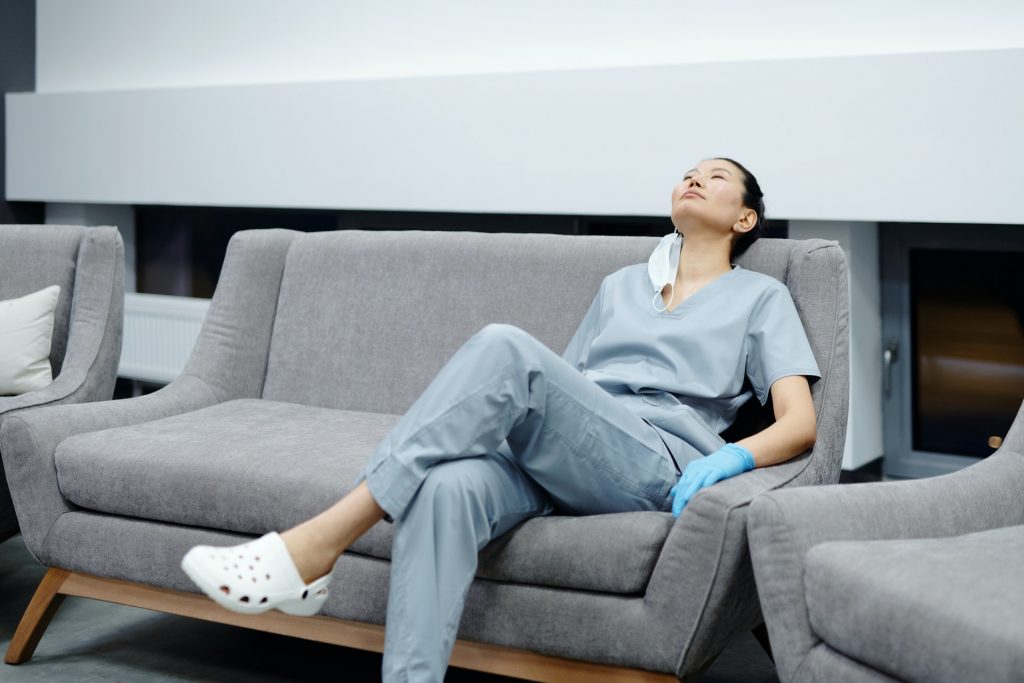
Overworked, sick, and stuck
The situation plays out similarly in other wards. When we spoke, Amir had just returned from a night shift where he and two other colleagues were made to monitor and treat about 150 patients between them.
ADVERTISEMENT
Nurses have also been given additional duties on top of their regular ones. Amir’s work duties previously consisted mainly of dressing wounds, placing casts, and treating fractures.
However, his duties have expanded to include administrative tasks such as managing discharge documents and ensuring that the patient has sufficient food and transport.
According to Amir, many nurses are often called back to work even on their days off. Due to the intense pressure and workload, many nurses eventually fall ill, which leads them to take official medical leave to rest properly. This creates a vicious cycle of overworked nurses, which then leads to a further shortage of staff.
The exceptionally high volume of foreign nurses resigning has also compounded the issue of staff shortage.
“Many nurses miss their families and haven’t seen them in years,” says Angela, who is not originally from Singapore. “I have not seen my family in over two years. It’s been hard for me.”
More and more foreign nurses have resigned to return to their home countries and fulfil personal obligations. Angela feels that the hospital management are unable to empathise with the unique emotional burden faced by foreign nurses, which places additional stress on them.
Insufficient beds
In addition to the staff shortage, the healthcare system also has to grapple with insufficient bed space for the influx of COVID-19 patients.
According to the Ministry of Health, as of September 25, hospital beds have reached a high of 90% occupancy. On October 4, Senior Minister of State for Health, Dr Janil Puthucheary, reported in Parliament that “ICU bed occupancy has increased from 26 per cent to 53 per cent.”
This bed shortage has led to impossibly long waiting times—Dr Janil added that it has become common to wait 48-72 hours just to be warded. Furthermore, waiting to be taken to community care facilities also takes time. The longest time Amir has seen a patient wait is a whopping 29 hours.
Patients, then, have no choice but to wait it out at the Emergency Department, or the A&E, until they are admitted into the wards.
Irfan, a nurse of ten years, shared that when the A&E overflows with patients, they are usually moved to other wards—such as the general ward—where they wait on “uncomfortable” trolley beds or even temporary spaces.
Such makeshift accommodations are similar to the carpark at Tan Tock Seng General Hospital, constructed to house patients awaiting admission.
This can be unpleasant, especially for the elderly, due to the noise, crowds, bright lights, and lack of privacy. Many become agitated and confused—some patients even attack healthcare staff out of frustration.
“It’s a difficult situation for everyone involved,” says Irfan. “We are trying to balance clean and dirty cases, but it is getting harder and harder.”
As hospitals prioritise the admission and care of patients infected by COVID-19, many “clean cases”, or patients afflicted by something other than the virus, do not receive the immediate care they require.
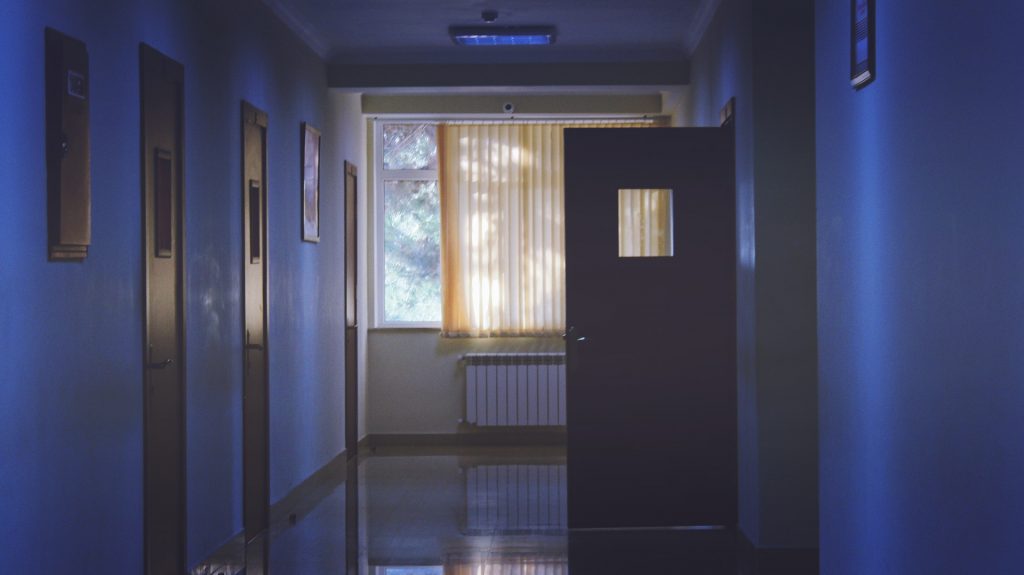
Government assurances
On October 2, at a press conference held by the multi-ministry task force addressing COVID-19, Health Minister Ong Ye Kung announced that several measures would be put into place to tackle the lack of beds in hospitals.
Most notably, hospital beds will be augmented by beds in COVID-19 Treatment Facilities, also known as CTFs.
The government aims to set up nine CTFs with a total capacity of about 3,700 beds by October end. “If we can do that, we can place patients away from hospital settings into the CTFs and therefore ameliorate the crunch at the hospital end,” Mr Ong explained.
Still, the nurses are wary. Joseph, a nurse at the COVID-19 pandemic ward of his hospital, argues that it is more important to focus on the shortage of nurses than the number of facilities. He explains that nurses will eventually have to be deployed to the new facilities when they are constructed, leaving the hospitals even more understaffed than before.
“What is the point of building more spaces when there aren’t any nurses to run them in the first place?” Joseph asks. “You can build as many spaces as you want, but there will still be problems as long as there is a shortage of workers.”
The long and uncertain path ahead
It’s evident that Singapore’s healthcare system is showing signs of being overburdened, and the two most notable pieces of evidence for that are the shortage of staff and lack of facilities.
Although the government is working to implement specific measures and initiatives, its effectiveness in mitigating the overcrowding crisis remains to be seen—especially with the rate of infected patients predicted to rise to 5,000 per day.
The Stabilization Phase implemented on 27 September, does, in large part, help to ensure this exponential and expected rise in the number of cases stays within the limitations of our currently strained healthcare system. The government is also strongly encouraging the elderly and persons with comorbidities to reduce social interactions and stay home as much as possible.
New protocols are also established where people who have tested positive for COVID-19 but are not showing symptoms, are asked to recuperate and isolate at home, pending a negative self-administered ART result at the end of 72 hours. A negative ART test is an indication that one can stop self-isolation and resume normal activities.
Amir posits that the government should be more proactive in ensuring that neighbourhood polyclinics treat patients with “simple” cases internally rather than send them to hospitals; he believes that doing so will alleviate the issue of patient overcrowding.
Irfan believes “a general aura of misinformation” among the general public should be remedied. For instance, many are unaware of the lengthy waiting times before ward admission.
For Angela, foreign nurses, who comprise an integral part of Singapore’s medical workforce, should be provided more emotional support and understanding through their unique challenges; this will help reduce psychological stress, allowing them to work more efficiently.
The nurses have varying attitudes regarding the tenacious situation. On the one hand, Joseph tells me that he believes that “we have already lost”, while Irfan hopes that “our nurses remain resilient” and that “they don’t give up even in the face of struggle”.
Others remain resigned to their circumstances. “This is, after all, my job,” Amir says. “We just have to do our best to get through each day.”

